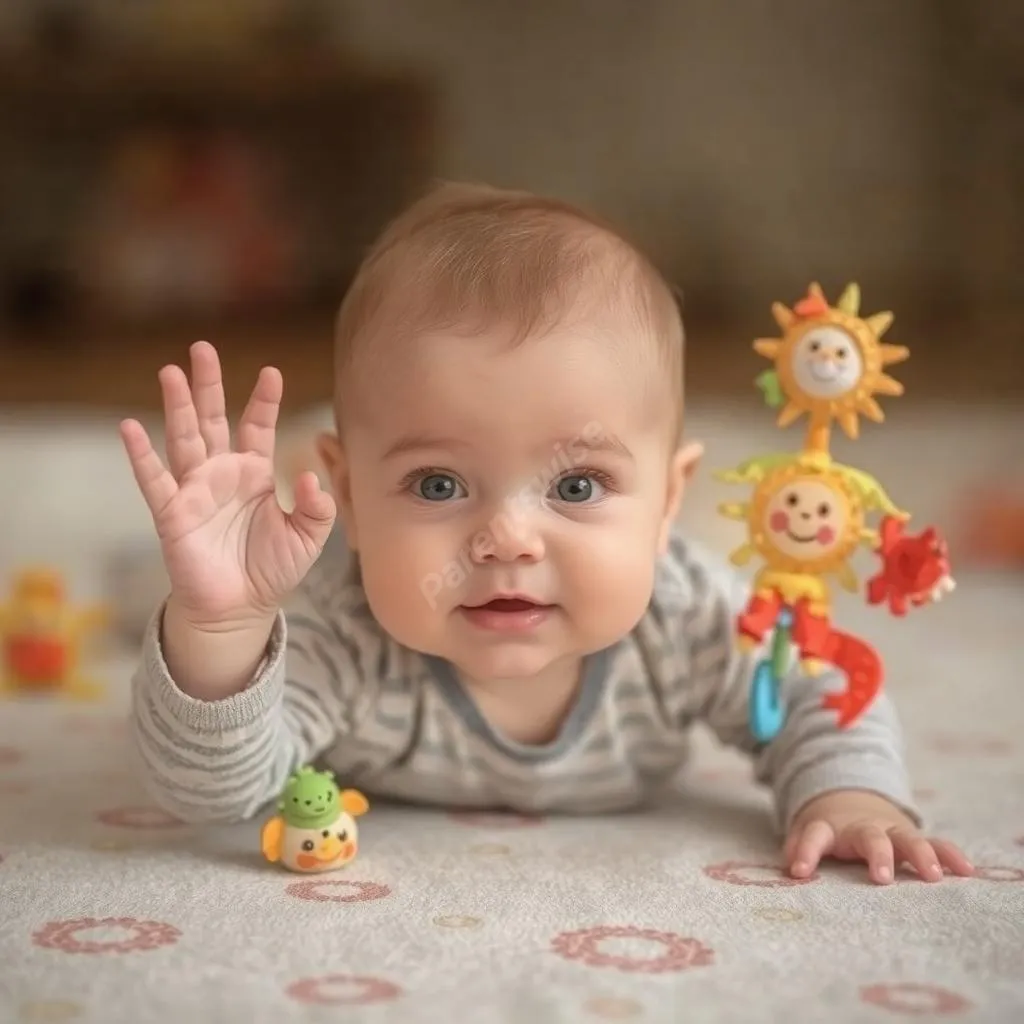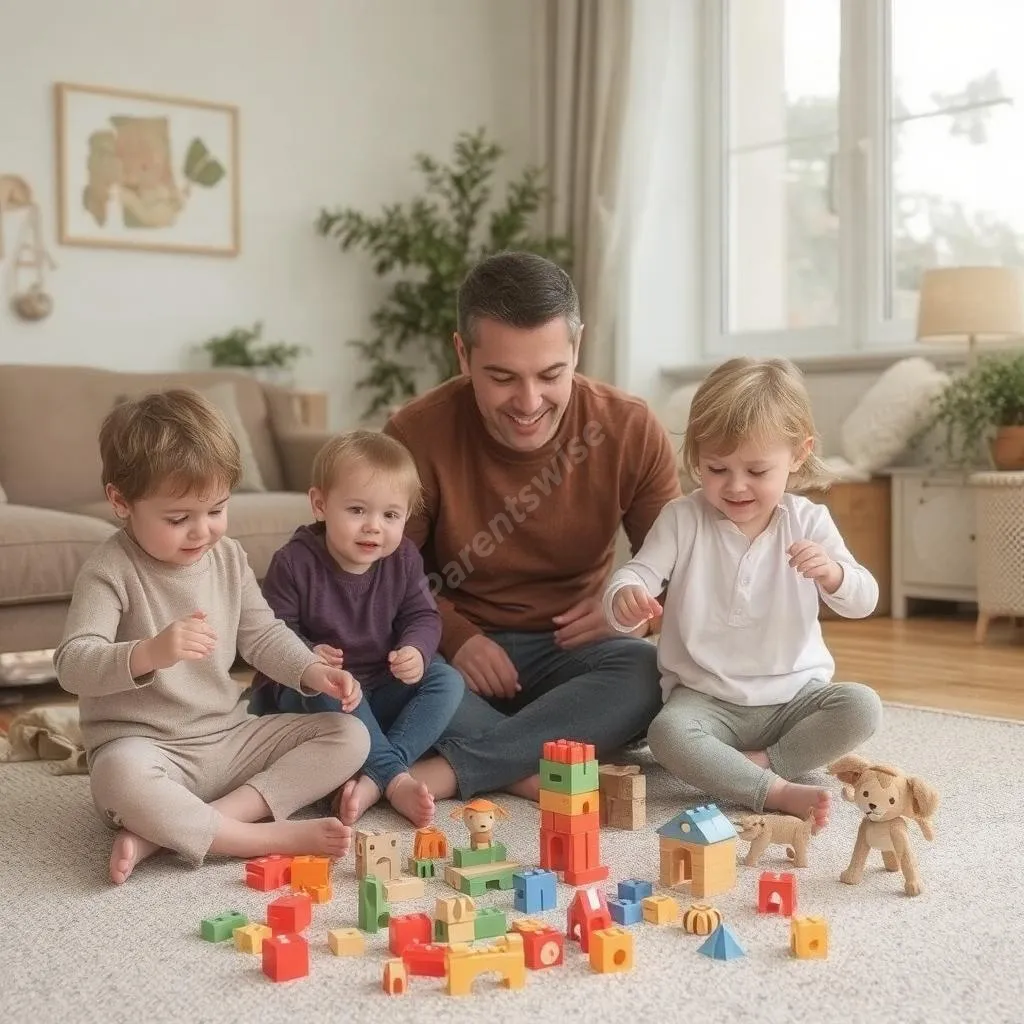When Should Parents Be Concerned About Motor Delays?

Here’s a surprising fact: Most babies start walking between 9 and 18 months. Yet about 6% of little ones face motor delays in their early years. Every parent loves watching their child’s growth journey. It’s thrilling to see your baby roll over for the first time. Soon they’re crawling across the floor. Then one day, they’re running through your home!
But what if things seem different for your child? What if their movement milestones don’t match the usual timeline? You’re not alone in these concerns. Many parents share the same worries. This guide will help you understand normal development patterns. You’ll learn the difference between typical growth and possible delays. We’ll explore important motor milestones together. You’ll get clear signs about when to seek help. Best of all, you’ll discover practical ways to support your child’s growth. Let’s start this journey together.
Understanding Motor Development
Let’s break down what we mean by motor development. Think of it as two main types of movement skills. Each type helps your child explore their world differently.
Gross Motor Skills
These are the big movement skills that use large muscles. Here’s what they include:
- Running and jumping
- Climbing stairs
- Riding a bike
- Throwing and catching balls
- Balancing on one foot
Fine Motor Skills
These involve smaller, precise movements. They usually use hands and fingers:
- Holding a crayon
- Using scissors
- Building with blocks
- Buttoning clothes
- Feeding themselves with utensils
Why Motor Skills Matter
Your child’s movement abilities affect many areas of life:
- Social connections: Playing with friends requires good movement skills
- Learning readiness: Writing and drawing need strong hand control
- Daily independence: Skills like dressing and eating rely on motor development
- Self-confidence: Movement success builds your child’s self-esteem
- Brain development: Movement experiences help form brain connections
Remember this key point: Every child develops at their own pace. Some learn certain skills faster than others. That’s completely normal.
Normal Motor Development Timeline

Important Note for Parents
Every child grows differently. This timeline shows typical ranges. Your child might reach these steps earlier or later. Both can be normal.
Motor Development Milestones Table
Birth to 3 Months
- Lifts head during tummy time
- Brings hands to face
- Holds and shakes toys
- Watches moving objects
- Kicks legs while lying down
4-6 Months
- Rolls from tummy to back
- Sits with support
- Reaches for toys
- Brings objects to mouth
- Uses whole hand to grasp items
7-9 Months
- Sits without support
- Crawls forward
- Pulls up to stand
- Picks up small objects
- Moves objects between hands
10-12 Months
- Takes first steps
- Stands alone
- Uses pincer grasp
- Puts blocks in containers
- Points with index finger
13-18 Months
- Walks steadily
- Climbs stairs with help
- Scribbles with crayons
- Stacks 2-3 blocks
- Feeds self with spoon
19-24 Months
- Runs fairly well
- Kicks a ball forward
- Uses spoon and fork
- Turns book pages
- Builds tower of 4-6 blocks
2-3 Years
- Jumps with both feet
- Rides tricycle
- Uses scissors
- Draws circles
- Throws ball overhand
4-5 Years
- Hops on one foot
- Skips and gallops
- Ties shoelaces
- Writes some letters
- Cuts along lines
Remember:
These ages show typical ranges. Many children may master skills at different times. Focus on progress, not perfection.
Common Red Flags by Age Group
Every parent wants to know what to watch for. Let’s explore signs that might need professional attention. We’ll break this down by age to make it easier to follow.
For Infants (0-12 months)
Physical Signs to Watch:
- Baby feels very stiff or floppy when you hold them
- Strong preference for turning head to only one side
- Difficulty bringing hands together or to mouth
- Seems to use only one side of the body
Movement Concerns:
- Not lifting head during tummy time by 3 months
- Unable to sit without support by 9 months
- No rolling in either direction by 6 months
- Not crawling or scooting by 12 months
Think of your baby’s development like building blocks. Each skill builds on the last one. Missing early skills might affect later ones.
For Toddlers (1-2 years)
Walking and Balance:
- Not walking by 18 months
- Always walking on toes
- Frequently falling more than other toddlers
- Trouble walking on different surfaces
Hand and Finger Skills:
- Can’t pick up small objects
- Doesn’t point at things
- Unable to hold a spoon
- Doesn’t try to stack blocks
Remember: Toddlers should explore their world eagerly. Limited movement might mean they need extra help.
For Preschoolers (3-5 years)
Gross Motor Concerns:
- Can’t jump with both feet
- Unable to climb stairs one foot per step
- Doesn’t run or shows unusual running pattern
- Can’t throw or catch a large ball
Fine Motor Red Flags:
- Trouble holding crayons
- Can’t copy simple shapes
- Difficulty using scissors
- Struggles with clothing fasteners
Daily Living Skills:
- Problems feeding themselves
- Unable to help with dressing
- Difficulty playing with typical preschool toys
- Avoids physical activities other kids enjoy
Important Parent Tips:
- Trust your instincts. You know your child best.
- Keep a simple diary of skills you notice.
- Take videos of movements that worry you.
- Share specific examples with your doctor.
Think of red flags like yellow traffic lights. They don’t mean something is wrong. They just signal when to slow down and look closer.
Factors That Can Affect Motor Development

Many things can influence how your child develops movement skills. Let’s explore these factors in simple terms. Understanding them helps you support your child better.
Birth-Related Factors
Premature Birth
- Early babies might need extra time to develop
- They often catch up by age 2
- Regular check-ups help track progress
- Early support can make a big difference
Birth Weight
- Low birth weight might slow early development
- These babies may need additional monitoring
- Most catch up with proper support
- Regular healthcare visits are important
Environmental Influences
Physical Space
- Limited play space can affect development
- Children need room to move freely
- Safe exploration areas help build confidence
- Outdoor play is especially valuable
Play Opportunities
- Limited toy access might slow development
- Simple household items make great learning tools
- Floor time is crucial for babies
- Active play helps build strong muscles
Medical Conditions
Physical Conditions
- Muscle tone issues affect movement
- Joint problems can limit motion
- Vision problems might slow coordination
- Balance disorders affect physical skills
Neurological Factors
- Brain differences can affect movement
- Some conditions run in families
- Early identification helps treatment
- Support services can improve outcomes
Lifestyle Factors
Daily Routines
- Too much time in seats limits movement
- Screen time affects physical activity
- Regular exercise helps development
- Sleep quality impacts motor skills
Family Habits
- Active families often have active kids
- Family meals help fine motor skills
- Regular playtime supports development
- Parent involvement boosts progress
Supporting Tips for Parents
- Create safe spaces for movement
- Limit time in carriers and seats
- Encourage daily physical play
- Mix up activities for various skills
Remember: Many factors work together. Focus on what you can control. Small changes often make big differences.
When to Contact a Professional
Making the decision to seek help isn’t always easy. Let’s break down exactly when and how to take action. This guide will help you make confident choices about your child’s care.
Immediate Concerns (Red Flags)
Contact your doctor right away if you notice:
Movement Issues
- Your child loses skills they once had
- Movements seem very stiff or floppy
- Your child strongly favors one side
- Movements cause pain or distress
Development Gaps
- Your child misses several milestones
- Skills are significantly delayed
- Development seems to stop suddenly
- Your child avoids physical activities
Watch-and-Monitor Signs
These situations deserve attention at your next check-up:
Physical Skills
- Slight delays in single milestones
- Unusual movement patterns
- Balance seems a bit off
- Coordination looks different from peers
Daily Activities
- Struggles with age-appropriate toys
- Has trouble keeping up during play
- Shows frustration with physical tasks
- Tires more quickly than other children
Types of Specialists Who Can Help
Primary Care Provider
- Usually your first contact
- Can perform initial screenings
- Makes referrals to specialists
- Coordinates overall care
Physical Therapist
- Helps with gross motor skills
- Teaches new movement patterns
- Strengthens weak muscles
- Improves balance and coordination
Occupational Therapist
- Focuses on fine motor skills
- Helps with daily living activities
- Improves hand-eye coordination
- Supports play and learning skills
Developmental Pediatrician
- Specializes in child development
- Diagnoses specific conditions
- Creates treatment plans
- Monitors progress over time
What to Expect at an Evaluation
Before the Visit
- Write down your concerns
- List specific examples
- Bring videos if possible
- Gather medical history
During the Assessment
- The specialist will observe your child
- They’ll ask about daily activities
- They might use screening tools
- Your child will try various tasks
After the Evaluation
- You’ll receive detailed findings
- The team will explain next steps
- You’ll get a written plan
- They’ll schedule follow-up care
Parent Tips for the Process
- Trust your instincts about your child
- Don’t wait if you have serious concerns
- Keep detailed notes about your observations
- Ask questions until you understand everything
- Remember: Early help often means better outcomes
Supporting Your Child’s Motor Development

Every moment can be a learning opportunity. Let’s explore fun and simple ways to boost your child’s motor skills at home. These activities fit naturally into your daily routine.
Simple Home Activities for Gross Motor Skills
For Babies (0-12 months)
- Tummy time with colorful toys
- Rolling games with gentle support
- Reaching for dangling toys
- Sitting practice with cushion support
- Crawling games through tunnels
For Toddlers (1-3 years)
- Dance parties to favorite songs
- Obstacle courses with pillows
- Ball rolling and throwing games
- Animal movement imitation
- Follow-the-leader walks
For Preschoolers (3-5 years)
- Hopscotch with numbers
- Simon Says with body movements
- Balloon keep-up games
- Target practice with soft balls
- Balance beam walking on tape lines
Fine Motor Development Activities
Kitchen Adventures
- Stirring pancake batter
- Using cookie cutters
- Pouring water between cups
- Sorting dry pasta shapes
- Spreading butter on toast
Art Time
- Finger painting
- Play-dough squishing
- Sticker peeling
- Bead stringing
- Paper tearing and crumpling
Daily Tasks
- Buttoning practice games
- Zip-up races
- Sorting laundry by color
- Using child-safe scissors
- Drawing on vertical surfaces
Creating a Development-Friendly Environment
Safe Spaces
- Clear pathways for movement
- Stable furniture for pulling up
- Soft landing spots for practice
- Age-appropriate climbing options
- Easy access to active play toys
Organization Tips
- Keep favorite toys at child’s level
- Rotate toys weekly for new challenges
- Create designated play areas
- Use child-sized furniture
- Set up activity stations
Making Practice Fun
Remember these key points:
- Turn activities into games
- Celebrate small progress
- Join in the activities
- Keep sessions short and sweet
- Follow your child’s interest
Daily Routine Integration
Include movement in everyday tasks:
- March to the bathroom
- Hop while picking up toys
- Crawl to get dressed
- Reach high during clean-up
- Squat to find shoes
Facts vs. Myths About Motor Delays
Let’s clear up some common confusion about motor development. Many parents worry unnecessarily because of incorrect information. Here’s what research really tells us.
Common Misconceptions Explained
| Myth | Fact | Explanation |
|---|---|---|
| “Walking early means higher intelligence” | Early walking has no connection to intelligence | Each skill develops independently. Some brilliant kids walk later, while some early walkers may need help in other areas. |
| “Boys naturally develop slower than girls” | Gender rarely affects motor milestones | Both boys and girls should reach major milestones within similar timeframes. Individual differences matter more than gender. |
| “Skipping crawling causes learning problems” | Some babies skip crawling and develop normally | While crawling is beneficial, some babies prefer different ways to move. Rolling, scooting, or bottom-shuffling can work too. |
| “Late walkers will always be clumsy” | Early milestone timing doesn’t predict future coordination | Many late walkers become perfectly coordinated. Some early walkers might need help with balance later. |
| “Using walkers helps development” | Walkers can actually delay natural development | Babies learn best through floor play and natural movement. Walkers can limit important muscle development. |
Important Truths About Development
Every Child is Unique
- Development follows different paths
- Skills can emerge in various orders
- Progress isn’t always steady
- Each child has their own strengths
Environment Matters
- Safe spaces encourage exploration
- Regular practice builds confidence
- Different cultures value different skills
- Family support helps tremendously
Early Support Works
- Quick action often brings better results
- Many delays can improve with help
- Professional guidance makes a difference
- Family involvement boosts success
Common Parent Concerns Addressed
About Comparisons
- Avoid comparing siblings
- Each child’s journey differs
- Focus on individual progress
- Celebrate personal achievements
About Development Windows
- Skills develop over time
- There’s rarely a strict deadline
- Many catching-up opportunities exist
- Support helps at any age
Expert Insights
Research shows:
- Most delays improve with support
- Early intervention helps significantly
- Family involvement matters most
- Natural development varies widely
Taking the Next Steps

Key Takeaways for Parents
Remember these important points:
- Every child develops differently
- Early action brings better results
- You know your child best
- Support is always available
- Small progress deserves celebration
Your Action Plan
Start Today
- Watch your child’s development
- Keep a simple progress diary
- Share concerns early
- Try suggested activities
- Connect with support systems
Stay Positive
- Focus on improvements
- Celebrate small wins
- Trust the process
- Keep activities playful
- Build on strengths
Final Thoughts
Motor development is just one part of your child’s amazing journey. Trust your parenting instincts. When you notice something different, speak up. Early support can make a real difference.
Your child’s path might look different from others. That’s okay. What matters most is progress, not perfection. You’re doing a great job by seeking information and staying informed.
Next Steps
- Schedule your child’s next check-up
- Try one new activity tomorrow
- Join a parent support group
- Save helpful resource links
- Share this guide with other parents
Remember: You’re not alone on this journey. Reach out when you need help. Your attention to your child’s development today builds a stronger tomorrow.
